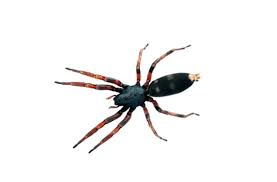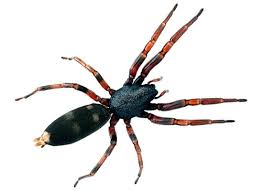Here we dispel the myths associated with this creature
When it comes to dangerous spider species’, the White tail spider is one of the most commonly misrepresented.
Several years ago, controversially, news reports falsely claimed the spider was responsible for causing severe skin ulcerations, and even the amputation of a man’s legs. Yet, while such reports were quickly falsified, the damage had been done: the story spread like wildfire, igniting fear and distrust in the species across local communities.
But are these spiders actually dangerous in any capacity? Or just a minor nuisance to be left alone? To help you find out, let’s go over the basics first.
Identification
In Australia, the two most common types of white tail spiders are the Lamponacylindrataand the Lamponamurinais.
Typically, the cylindrata is found across southern Australia, such as south east Queensland, New South Wales, Victoria, South Australia, Tasmania, and Western Australia, while the murinais is found in parts of eastern Australia.
Appearance-wise, white tail spiders are a dark, reddish grey colour with a cylindrical, cigar-shaped body. Their most characteristic trait is the white spot at the tip, hence their namesake. The male spider’s abdomen is around 12mm, while the female spider’s abdomen is 18mm – roughly the size of a fingernail.
Location
Tight, narrow spaces are ideal for most white tail spiders, seeking refuge beneath rocks, bark, plant litter, and garden beds. In the home, they will seek out similar shelter, such as curtains, sheets left on the floor, towels hanging to dry, and underneath furniture.
To avoid an unpleasant surprise, be sure to give your washing a good shake before bringing it inside as well!
White tail spiders tend to grow in number during summer and autumn, as this correlates with the increased number of other spiders, which the white tail spiders prey on for food and nourishment. They will also seek shelter inside during summer to escape the blistering heat.
Do White Tail Spiders Spin Web?
 Unlike other spiders, the white tail do not in fact spin web. Instead, they resort to leaving the nest and hunting prey in the night, running at a fast pace to catch and consume other unsuspecting spiders, including redback spiders and black house spiders.
Unlike other spiders, the white tail do not in fact spin web. Instead, they resort to leaving the nest and hunting prey in the night, running at a fast pace to catch and consume other unsuspecting spiders, including redback spiders and black house spiders.
For this reason, the next you see a white tail and grab the bug spray, stop for a moment and think: perhaps this creature won’t do you more harm than good, and will instead benefit your surroundings?
In this case, consider relocating the spider to a place outside, where it will leave you alone yet still have the freedom to hunt and live freely.
Dispelling the White Spider Bite Myth
If you have ever heard the myth that a white tail spider bite can cause nectrociarachnidism – a “flesh eating” spider bite – you will be relieved to know the truth is far less scary.
Put simply, there is nothing in the venom of a white tail spider than can cause necrosis. This finding was confirmed in 2003, when The Medical Journal of Australia published an investigation into 130 separate white tail spider bite cases, to which there were zero confirmed cases of nectroticarachnidism.
Furthermore, the study concluded that only 27 percent of white tail spider bites were severe, where the worst symptoms were persistent pain and irritating red lesion for a couple of days.
One thing must be noted: there is a slight risk of necrosis through bacteria after a spider bite, if the bite is left uncleaned and exposed. However, this risk applies to any spider bite or injury for that matter, so the risk being attributed solely to the white tail spider is misleading.
Symptoms of White Tail Spider Bites
Upon first bite, most people experience a sudden burning sensation, followed by mild swelling and an itchy red mark. There is no antivenom for white tail spider bites, as there is no need for one. Most symptoms ease within a few hours to a couple of days at most.
If you are bit by a white tail spider or need to help someone who has, follow these steps:
- Sit down, relax
- Clean the bite with cool water and disinfectant
- Apply an ice pack to the bite area – do not apply pressure to the area, as this may restrict it and cause excruciating pain
- If possible, identify the exact species of the spider
- Seek medical attention if the symptoms persist or get severe
How to Get Rid of White Tail Spiders
As a nomadic spider with no fixed hiding place, white tail spiders prey on other web building spiders. One way to curtail white tail spiders is to remove cobwebs both in and around the property. This way, they have to look elsewhere for nourishment.
If you suspect a larger, ongoing presence of white tail spiders, you may have a hidden food source that is attracting them.
Talk to the local experts at All Bugs for personalised advice and support. Our fully licensed team will inspect your home or business, narrow down the exact cause of the infestation, and – if necessary – put in place a treatment plan to resolve the problem.
You will also get recommendations for preventive treatment to avoid trouble in the future.
For a free, no obligation quote on white tail spider and other pest control services, contact All Bugs today.



Leave a Reply